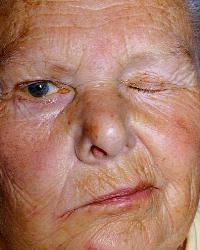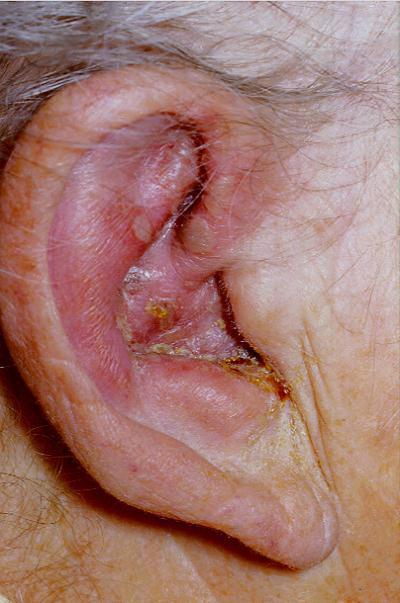 |
 |
The most common diagnosis is Bell's palsy in which the cause is unknown.
Presentation
- an alarming facial disfigurement for the patient with one-sided
- problems with incomplete lid closure resulting in dry or
crooked smile, mouth drawing
watering eye on the same side
- varying degree of one-sided paralysis of the muscle of expression
- incomplete closure of the eyelids with exposure of the conjunctiva
- reduced blinking
- there may be evidence of secondary causes such as herpes zoster
and cornea, punctate staining on the cornea may be present due to
dry eyes
look for vesicles on the external ear
Ocular anagement:
- Most facial nerve palsies have no known cause and resolve over
- Role of ophthalmologist is to prevent corneal damage from
- Prescribe artificial tear to be instilled every hour during the day
- During bedtime ointment is instilled into the eye and the eyelid
the next few weeks
exposure while waiting for the nerve function to recover
time; avoid ointment as this can blur the vision and is
unpleasant for the patient
strapped shut with tape. Avoid eye patch as this can cause corneal
abrasion due to poor lid closure
Additional management:
- If there were history of ear pain or otitis media refer to the ENT
- Prescribe oral acylcovir if there were evidence of herpes zoster
surgeon for possible middle ear problem